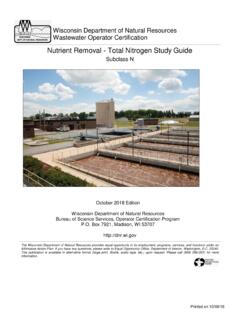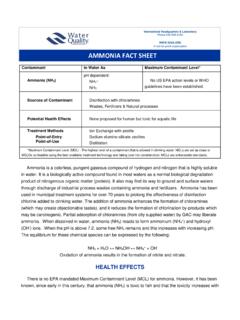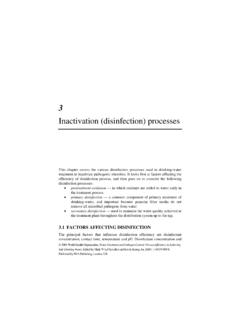Ammonia In Drinking
Found 5 free book(s)IS 10500 (2012): Drinking water
tspcb.cgg.gov.inby the Drinking Water Sectional Committee had been approved by the Food and Agriculture Division Council. This standard was originally published in 1983. A report prepared by the World Health Organization in cooperation ... In this revision, additional requirements for ammonia, chloramines, barium, molybdenum, silver, sulphide, nickel,
PRODUCTS MADE FROM OIL AND NATURAL GAS - Energy
www.energy.govAmmonia. Antifreeze Antihistamines. Antiseptics Artificial limbs. Artificial turf Asphalt. Aspirin Awnings. Backpacks Balloons. Ballpoint pens Bandages. Beach umbrellas Boats. ... Drinking cups Dyes Electric blankets Electrical tape Enamel Epoxy paint Eyeglasses Fan belts Faucet washers Fertilizers Fishing boots Fishing lures Floor wax Food ...
Nutrient Removal - Total Nitrogen Study Guide
dnr.wi.govAmmonia is a form of nitrogen that exists in aquatic environments and is toxic to fish and ... groundwater discharges to ensure that drinking water standards are maintained in water supplies. Anaerobic is a condition in which free, dissolved, and combined oxygen is unavailable in
AMMONIA FACT SHEET - Water Quality Association
www.wqa.orgThe concentration of ammonia that exists in drinking water has been determined by the US EPA and WHO not to be of a health risk. WHO does recognize odor effects at a concentration of 1.5 mg/L and taste effects at 35 mg/L. In 2013, the US EPA has recommended water quality criteria for aquatic life expressed as Total ...
Inactivation (disinfection) processes
www.who.int7–9, at chlorine to ammonia nitrogen ratios of less than 5:1 and at 25°C; it is also the predominant species when the pH is greater than 5. Other factors that influence microbial sensitivity to disinfection include attachment to surfaces, encapsulation, aggregation and low-nutrient growth.




